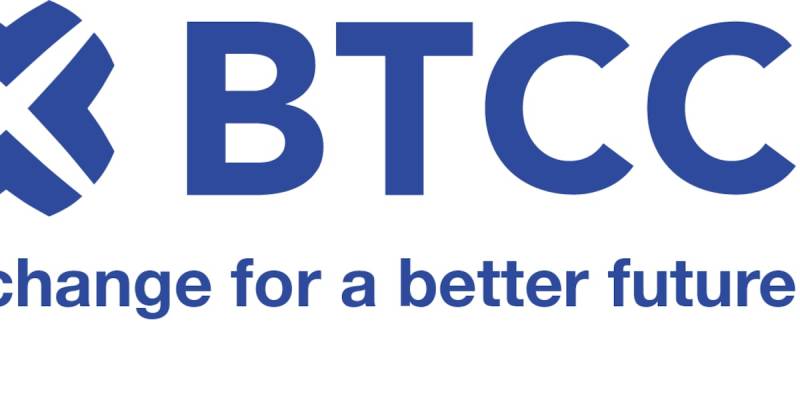 |
|
 |
|
 |
|
 |
|
 |
|
 |
|
 |
|
 |
|
 |
|
 |
|
 |
|
 |
|
 |
|
 |
|
 |
|
Cryptocurrency News Articles
Hera, the Planetary Defense Mission From the European Space Agency (ESA), Has Embarked on Its Two-Year Journey
Oct 12, 2024 at 04:02 am
With the launch of the Hera spacecraft on Oct. 7, the ESA achieved one of its key objectives — putting together a spacecraft about the size of a van and then launching it with speed.

The European Space Agency's (ESA) planetary defense mission, Hera, has embarked on its two-year journey. With the launch of the Hera spacecraft on Oct. 7, the ESA achieved one of its key objectives — putting together a spacecraft about the size of a van and then launching it with speed.
Another objective of the mission is to study the aftermath of NASA's 2022 DART mission, which successfully changed the trajectory of an asteroid through a direct impact.
About 30,000 asteroids come relatively close to Earth, and one such space rock hits the planet every 10,000 years. Such an impact, according to Thales, would be equivalent to an explosion of around 50 megatons.
“Hera is part of the international effort to answer the question: Could we do anything if we spotted one on a collision course?” wrote ESA on X (previously Twitter).
Asteroids of mid-sizes, as per Thales, are the ones we should worry about as their impact on a populated area would be devastating. So, a close examination of the effects of DART's impact will enable Hera to refine asteroid deflection strategies for future planetary defense initiatives.
According to ESA scientists, the investigation of the crash site will help solve the mysteries not only of Dimorphos, which is the size of the Great Pyramid of Giza with a diameter of 495 feet, but also of Didymos, the larger asteroid it orbits. Didymos is the size of a mountain, with a diameter of 2,559 feet.
Additionally, Hera will help us understand our solar system by uncovering more information about its formation. This cube-shaped spacecraft will be the first to carry CubeSats to deep space, further enhancing its scientific capabilities.
“Hera will provide valuable data for future asteroid deflection missions and science to help humanity's understanding of asteroid geophysics as well as solar system formation and evolutionary processes,” wrote SpaceX on X.
Before Hera reaches the double-asteroid system in late 2026, which will take it 121 million miles (nearly 195 million kilometers) away from Earth, the spacecraft will swing by Mars in mid-March next year. This will provide Hera with the extra momentum needed to reach the asteroids.
During the journey, Hera will fly within 3,728 miles of the Martian surface and, as such, will observe one of the red planet's two moons, named Deimos. The spacecraft will get data for the Martian Moons eXploration (MMX) probe, which will be launched in the coming years to survey the moons and land a small rover on Phobos to collect samples for examination.
Hera will then arrive in Didymos' orbit, where it will spend six weeks surveying both asteroids. Once it's done observing, the spacecraft will release two CubeSats with their own propulsion systems.
One of the CubeSats is called Juventas, which is equipped with a radar instrument to peer deep beneath space rocks' surface. The other one is called Milani, a multispectral imager that maps dust and minerals on these asteroids. The CubeSats will use inter-satellite links to communicate with the spacecraft and then relay their findings back to Earth.
Over a period of 10 weeks, Hera will conduct observations that will take it closer to the asteroid's surface, coming as close as 0.6 miles (1 kilometer) to it. In the end, Hera could land on Didymos, while the CubeSats could make similar attempts at landing on Dimorphos.
With all the experience that ESA has and will acquire on Hera, it plans to use it for its next mission, Ramses. This way, if we ever detect an asteroid on a collision course with Earth, such reconnaissance missions can be launched quickly to precisely determine their trajectory and rule out a false alarm.
As part of Europe's planetary defense program, the Hera, with its two shoebox-size satellites, was launched from NASA's Kennedy Space Center in Florida on a Falcon 9 rocket.
This rocket from Elon Musk's SpaceX is a reusable, two-stage, medium-lift launch vehicle that provides safe and reliable transport for people and payloads into Earth orbit. Defined by SpaceX as “the world's first orbital class reusable rocket,” this reusability allows the company to bring down the cost of accessing space.
As per the official website, Falcon 9 has had 377 total launches, 333 total landings, and a total of 308 reflights so far.
For Europe's first planetary defense mission, Beyond Gravity also provided the essential components, including a central structural tube, solar wings, and electronic products, which are critical to the mission's success.
“Changing an asteroid's trajectory is an important planetary defense technique for humanity if a large asteroid
Disclaimer:info@kdj.com
The information provided is not trading advice. kdj.com does not assume any responsibility for any investments made based on the information provided in this article. Cryptocurrencies are highly volatile and it is highly recommended that you invest with caution after thorough research!
If you believe that the content used on this website infringes your copyright, please contact us immediately (info@kdj.com) and we will delete it promptly.
-

- "Cardano (ADA) Price Could Dip Below $0.60, Following Previous Market Cycle"
- Apr 09, 2025 at 05:10 am
- "Cowen goes on to say that ADA's technical indicators, such as its 20-week simple moving average (SMA) and 21-week exponential moving average (EMA), are lining up with the theory that the crypto asset could see another sizeable dip."
-

- BONK, the well-known meme coin, has risen over 35% in the last week, attracting meme coin investors in the market. So, what caused this rally?
- Apr 09, 2025 at 05:10 am
- The well-known meme coin, BONK, has risen over 35% in the last week, attracting meme coin investors in the market. So, what caused this rally?
-

-

-

-

-

-

-


























































